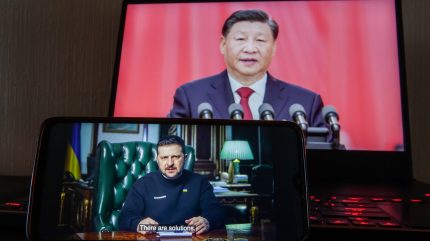
Internal supply chain difficulties and European bureaucracy has emerged as a leading problem for Ukraine’s burgeoning defence small and medium enterprise (SME) sector, with some seeing China as a preferred provider of components and subsystems due to its more relaxed export regulations.
From 27-29 September 2024, Army Technology gained unprecedented access to Ukraine’s defence start-up sector as part of the IT Arena conference in Lviv, where concepts of autonomy, uncrewed systems, and digitisation were high on the agenda across the land, sea, and air domains.
Despite innovations, questions remain over the ability of Ukraine’s defence industrial base to produce components, subsystems, and platforms, at the scale needed. Global supply chains still reeling from the impacts of the Covid-19 pandemic, an economic downturn in the West, and a lack of production capacity as a result of the post-Cold War peace dividend.
None of the industry representatives that spoke with Army Technology were willing to be named due to security concerns.
A representative of a Ukrainian defence company said that it was easier to obtain components from markets in China, rather than the European Union (EU).
“It’s easier [to obtain components from China], the duration [to complete an order] is just two days,” said the representative, adding that processing orders from the EU could take weeks to complete, citing paperwork and bureaucracy.
A second representative from a Ukrainian SME operating in the defence space told Army Technology that all prototypes of its platforms currently undergoing testing were manufactured in China, although the official held the aspiration to move the process in-country.
China’s communist regime is also providing non-lethal military support to Russia, and is widely seen as backing Moscow in the conflict.
Developing an industry in the midst of war
Meanwhile, Ukraine’s defence industrial base is also having to contend with developing itself at the same time as the country battles with the necessities of battlefield reality, with manpower and recruitment at the forefront of problems requiring a solution.
Ukraine has already reduced the lower age limit for conscription and has recently implemented a new digital initiative intended to improve efficiency in conscription deferrals and personnel administration.
Such are the demographics of Ukraine, where the average age of military personnel fighting on the eastern front against Russia is well into the late-30s, elements of emergent generations are seeking to take the reigns as the next influential industrialists of the 21st Century.
One industry official, participating in a panel discussion which included senior representatives from western defence companies, said that he and his peers “did not need to listen” to “older” engineers, as the technologies of the future evolve and digitisation advances.
“[The engineers] that have been in [industry] for 20, 30, 40 years, we don’t need to listen to them. They had their time,” the Ukraine industry official said.
Another panelist, addressing delegates during IT Arena conference in Lviv, said that Ukraine’s own industrial base, once many hundreds of companies strong, had shrunk by more than half, while a brain drain prior to the outbreak of the Russia war in 2022 saw capable engineers and business leaders head overseas to Europe and the United States.
A Ukrainian SME official speaking with Army Technology concurred with this perspective, staying that “many people” who could provide invaluable expertise into Ukraine’s defence sector inevitably “move abroad”.







